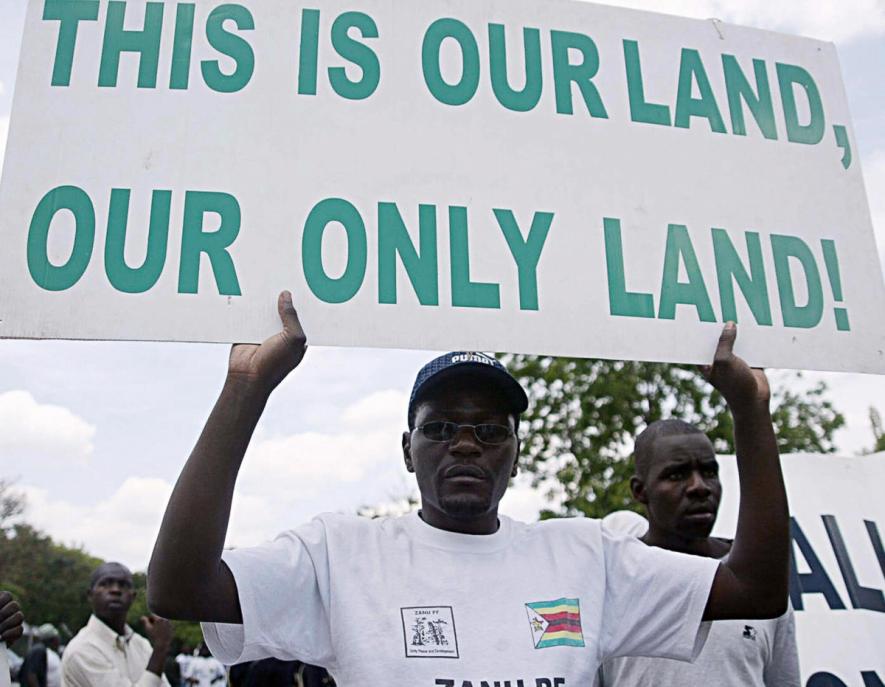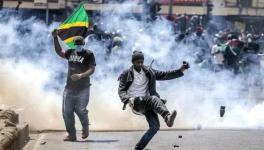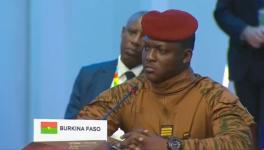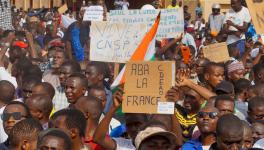Zimbabwe and Robert Mugabe: Looking Back

From ‘a revolutionary rise’ to the ‘fall from grace’, the story of Zimbabwean President Robert Mugabe is a classic example of how absolute power corrupts. On Friday, hundreds of people marched in the capital Harare demanding the resignation of Mugabe, who is still revered as a revolutionary figure in the fight against colonialism across Africa. The protest comes after the country’s military staged a ‘coup’ taking over the power, leading to a constitutional crisis. The ZANU PF, the ruling party has sacked Mugabe from its leadership, asking him to resign as the country’s President.
According to political experts, the present political impasse and the Mugabe crisis is the product of a political power consolidation around an individual for long. The economic crisis further exacerbated the discontent against the government.
As the country is witnessing various attempts to resolve the crisis, we look into the history to put into perspective which has been forgotten today. Zimbabwe’s story, like almost every nation in the African continent is about brutal colonial exploitation and then the imperial power meddling with its internal affairs.
Mugabe emerged as a leader of the country during the liberation struggle fought against the unrecognised white minority government led by Ian Smith. Smith had unilaterally declared the independence from the United Kingdom in 1964. At that time, the country was known as Rhodesia, after Cecil Rhodes, the brutal “leader” of the scramble for Africa and the loot of the continent.
The guerrilla war, known as the Rhodesian Bush War or Second Chimurenga, took place from July 1964 to December 1979. The liberation war was led by Zimbabwe African National Liberation Army, the military wing of Mugabe's Zimbabwe African National Union and the Zimbabwe People's Revolutionary Army of Joshua Nkomo's Zimbabwe African People's Union against the Smith’s white regime. Nkomo’s party later merged with Mugabe’s to for ZANU PF.
Mugabe had emerged as a major player in the struggle against Ian’s rule and the brutal terror unleashed by the Rhodesian Security Forces. At the height of the conflict, Ian’s paratroopers attacked schools and hospitals in majority black areas.
The people rallied behind Mugabe’s band of guerrillas and his call for ‘land to the tillers’. At the time of independence, 6,000 white farmers occupiedhalf of Zimbabwe's 81m acres of arable land. About 8,50,000 black farmers were crammed into the rest.
The post-independence government under Mugabe, who was first elected as the Prime Minister and later chosen as the President, approved major reforms that helped to improve the country’s health and education. Since independence in 1980, Zimbabwe has undergone changes to improve primary health care, toinvolve every child in primary school education, and to build a stable economy. The commitment to social justice and equitable distribution of resources was put into practice with positive results for contraceptive use, child mortality, nutrition, and education, according to reports.
One of the major, but controversial moves, was land reforms, seizing property from thousands of white farmers and redistributing them to landless blacks as recompense for the abuses of colonial rule.
In the 1979 Lancaster House agreement, after establishing the independent nation of Zimbabwe, the British government committed to compensate the white farmers as part of the land reforms. The new government in Zimbabwe was bound by "sunset clauses" in the Agreement that gave special protections to white Zimbabweans for the first ten years of independence.
After independence, Zimbabwe received a certain amount of financial assistance from the western governments to fund its land redistribution scheme. But conditions were put in place regarding the way that the money handed over could be used. Britain, in particular, especially under the Conservative Party government in power from 1979 to 1997, favoured redistribution based on government purchase of land from willing sellers at full market prices, a bias that contributed to the purchase of scattered, low-quality land for resettlement.The white farmers inflated the price of the land, thus making it virtually impossible for the government to sustain funding.
In 1997, Zimbabwean government accelerated the land reform process and published a list offarms it intended to buy compulsorily for redistribution after a nationwide survey was undertaken. In the same year, the Tony Blair government to power in Britain. His government later withdrew and refused to commit to the Agreement on funding the redistribution of land in Zimbabwe.
Mugabe had considerable support in the West, but his land reform moves angered many. The British government chose to get Mugabe knighted by Queen Elizabeth II in 1994. But ironically, when it came to paying what it owed to Zimbabwe in terms of financing the redistribution, the British chose to play the human rights card and dishonour its commitment.
On the illegal act of dishonouring a binding treaty by the British, Ken Sibanda, South African born Constitutional Lawyer writes:
“On land distribution Robert Mugabe is correct - the British do owe the Zimbabwean people assistance its historic implementation. For the simple reason that the British government of 79’ agreed to assist Zimbabwe’s land program regardless of Mugabe’s Human right record or misrule. It was an issue litigated/ concluded and discussed at Lancaster House and binding. Zimbabwe can argue collateral estoppel. Collateral estoppel is rule of law that says previous issues are binding when concluded between parties and cannot be raised again.”
According to political analyst, the British betrayal and the pressure from the war veterans in Zimbabwe pushed Mugabe to approve the fast- track land distribution programs. The fast-track reforms had its own problem as the black peasantry faced several issues with farming. Many, being pushed out of agriculture by the white farmers during the colonial period, were new to modern farming techniques. Also, due to the lack of proper title over the land on which they were resettled, many were unable to secure framing loans. These along with the rising corruption in the country that witnessed major portion of the land being distributed to people close to the government officials and the party led to massive under-utilisation of land. Without the much needed and promised financial aid to compensate redistribution and the declining the agricultural production, the country’s economy collapsed.
Land reform was clearly one of the main focal points of the anti-Apartheid movement. The redistribution in South Africa, as in the early period in Zimbabwe was limited and based on the “willing seller, willing buyer” principle After nearly 20 years of ANC rule in South Africa, the vast majority of South Africa's land is still in the handsof its white minority.
Despite the fact that land reforms movement in Zimbabwe had its own fault, it was the only country in Africa that stood against the imperialist powers and took steps to redistribute the lands illegally taken by the white colonisers from the native population.
Get the latest reports & analysis with people's perspective on Protests, movements & deep analytical videos, discussions of the current affairs in your Telegram app. Subscribe to NewsClick's Telegram channel & get Real-Time updates on stories, as they get published on our website.
























